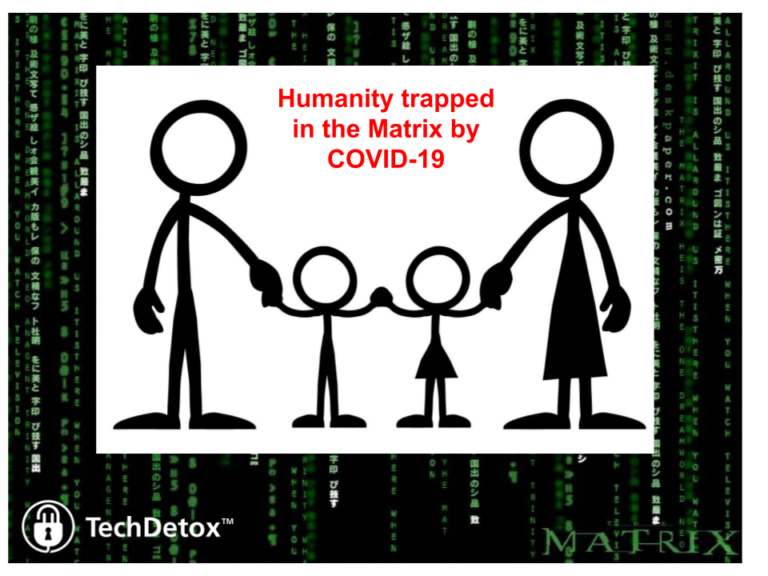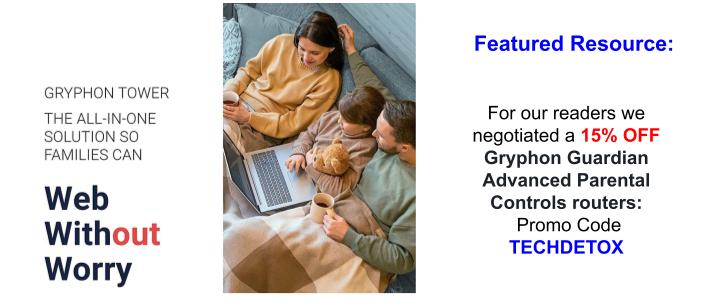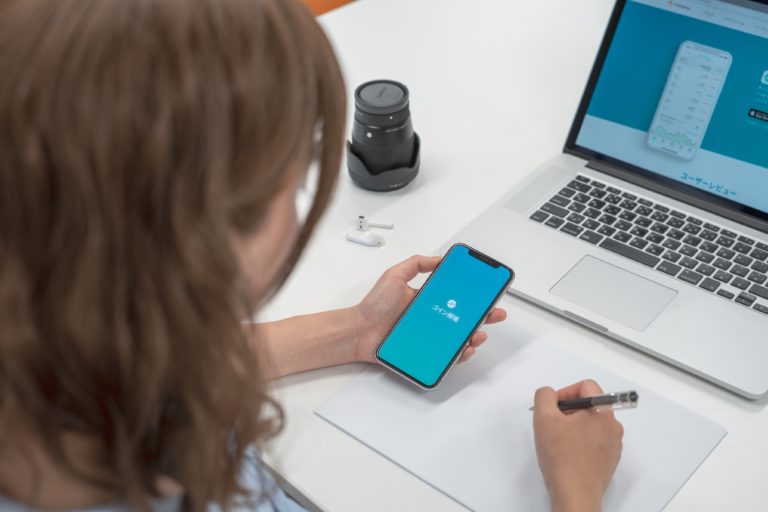
Humanity trapped in The Matrix by COVID-19
If I was an evil Artificial Intelligence genius, this is exactly where I would want humans to be – scared to death, glued to their screens.
With the COVID-19 global lockdown, this is where humanity found itself in 2020. Billions of us trapped in quarantine inside our homes and apartments, all real-life events cancelled, with screens our only option for work, education, communication, and entertainment.
A perfect setup for AI-driven digital media that was fiercely competing for limited human attention with all it’s got – apps, social media, news, video games, across multiple screens.
Not surprisingly, some humans have started to notice that Facebook and YouTube were kind of addictive and thus detrimental to their productivity, attention and relationships, and many were actively building better digital boundaries – working, socializing, exercising, spending time in the real world with real people.
Away from addictive screens.
But suddenly the real world is no longer an option. Billions of humans became slaves to their screens overnight. How convenient for the data mining industry.
Fear! Uncertainty! People feel the desperate need to be informed! Why? To get some sense of control over our lives.
But the more we read the news, the more desperate and depressed we become.
Because what is on the news is what has always been on the news – death and destruction. That’s what sells. The shock value. As the saying goes:
“If it bleeds, it leads”.
News outlets were not writing stories about the majority of people who recovered from the coronavirus. That’s boring, there is no drama in it. “I felt awful for a few days, now I am feeling so much better”, “I was symptom-free and did not even know I had the virus” – there is nothing interesting about that! No, the news outlets were writing about those that died. Now that will get – and keep – the viewers’ attention, because people would hang on every word to prevent the same fate happening to them.
And throwing around the blame for the crisis on various politicians builds more outrage in the trapped and desperate humans, more “Can you believe what they wrote?!” comments, forwards, spitting-matches. More ways to keep eyes on the screen. More data to collect and sell. How perfect.
Starved of real human connection, humans turn to social media to find solace, friendships and comfort. Except, even before the crisis, too much social media was associated with depression. In quarantine, social media for some was the only socializing they could do beyond immediate family.
If you thought 3 hours of Facebook a day was bad, can you imagine the unhealthy levels social media has reached now?
Social media frenzy spreads more panic than comfort, and magnifies anxiety and depression everyone is already struggling with.
Scams, sensations, conspiracy theories, and rumors spread way faster than legitimate scientific information. It’s not making things better, it’s making them worse.
Why? Because attention for digital media means money. And attention thrives on negativity bias that we humans have. We naturally pay more attention to the negative stuff, because our brains are scanning the environment for danger. That’s our evolutionary biology.
Since attention is what social media is optimized for, it is more likely that you see something on your news feed that would make you panic, than something that would make you calm.
If you are scared, you will keep your eyes glued to that screen, giving the platform more of your data for sale. Again, perfect – for them. But for us, we’d be better off following the advice from my kids’ school counselor to protect children’s mental health:
Turn off the news.
Oh yes – KIDS! AT HOME! ALL THE TIME! We love them, but they are worse than any virus! With parents trying to work remotely, and supervise kids’ Google classroom education at the same time?!
Homeschooling several kids and being on a conference call simultaneously is humanly impossible.
It’s a circus. It’s a screaming hell.
Nothing gets done, and everyone hates each other. Family relationships become collateral damage.
The only pathway to parental peace is…. Screens, of course.
When the iPads and phones and laptops and game consoles are distributed, exhausted parents can finally breathe easy. It’s quiet. They can get things done. They can relax. How convenient for the creators of digital media. They have a captive audience with malleable young brains to turn into digital addicts for life.
What happened to the “under 2 hours a day” screen time guidelines experts have been recommending to us for years? With the arrival of the virus, they were laughable.
Gone with all the screen alternatives we used to enjoy and take for granted: the school bus that reliably took kids to school for the blissful 7 hours every day, the sports practices, and games, and music, and art, and gymnastics, and dance, and swimming, and the million things we did for our kids to raise them as well-rounded human beings.
Gone were the screen-free family vacations we planned and booked and were forced to cancel. Gone were the get-togethers with friends and family. Gone were the day trips to farms and museums and beaches. Even hikes were forbidden at some point, for God’s sake! It turns out the government has the power to shut down nature itself. Who would have thought.
It almost seems the tech industry conspired with the government to create this perfect environment for digital addiction. We may be physically safe, but mentally we are falling apart.
What was left for us parents?! When we were virtually imprisoned in our own home and so much has been taken from us, what could we do to save our kids’ brains from screen-time overdose? Solutions were limited, but we found some that we hope might be helpful to your family too.
We have established set routines to keep our sanity.
Here is how we lived out our days in quarantine:
- Family digital media rules that were in place before COVID-19 crisis were still in place: no screens before 9am (when distance learning starts online) and no screens after 8.30pm, unless it’s a family movie night
- 9am-2pm: distance learning. Mom and Dad take turns supervising Kindergarten education for our youngest child, and pray that the two older ones do what they are supposed to do (if we get an email from the teacher, unfinished assignments would have to be done instead of screen time). Did they get distracted with online gaming and YouTube videos? One of them did. But we did not have an extra adult to stand behind his back, and the school could not block the content, otherwise Google classroom won’t work either. The way to contentment is to lower expectations.
- School ended at 2pm, chromebooks were put away, from 2 to 3pm was quiet hour – kids were to read or play in their rooms without disturbing each other or the parents. If they did, evening screen time was shortened. Amazon was having a field day with the money we were spending on kids’ books in Spring of 2020 – our library was closed. The house was trashed with toys and forts built out of cardboard, but it’s a small price to pay for free play. Free play is good for children’s development, and in quarantine they had more time for it – if screens were off.
- 3-4.30pm – chores time. We are blessed to live in the country, so there is always some garden work to be done. We worked together with them to supervise the quality of work (and break up fights between our little workers). They got dirty and discovered the existence of worms, like kids did for millennia. Today’s kids are increasingly deprived of direct experience with nature – they plant their gardens in Minecraft. With the real garden, kids get the chance to contribute and hopefully build some work ethic.
- 4.30-5pm – fitness hour. Kids go on a run with Mom in our neighborhood, we stretched and ran back home.
- 5pm: digital binging commenced until family dinner. Not 2 hours a day, more like 3. Which was better than 8 or 9 or 11. We did our best. Parents got to catch up on their work and/or relax.
- Evenings: family dinner, family movie night – usually an educational documentary.
- Extracurricular activities that transitioned online also helped bring more structure to the days, and we had several throughout the week: online karate, online dance, online chess and math, online church, online scouts.
- Weekends were the most challenging: play time, reading time, family time, cooking together, chores, fitness – needed to be scheduled for the entire day.
It was far from perfect, it was tons of work, it was exhausting, but it sort of worked. Mom and dad did not get much accomplished, but with the exception of school work we were able to keep 3 kids away from screens for most of their waking hours.
Because we firmly believe that a child’s brain is designed to develop in the real world, not in the attention-destroying, anxiety-producing, human-degrading artificial virtual world on the screen.
So we tried to hold onto some screen time rules even in the COVID-19 lockdown. And survived - if only just barely.
We were concerned about summer the most. As quarantine continued, we had to get a lot more creative — and patient — to make up for the absence of camps, vacations, and days on the beach. We have crossed that bridge with a family road trip and lots of hiking.
With schools and activities reopening it’s a lot easier now. The lockdown routines are on standby - we hope we will not need them again. Which might be wishful thinking, but we like to be optimistic. Whatever the future holds, sooner or later life will return to normal. Kids will go back to the real world, hopefully without being turned into the digital zombies unprepared to live and thrive in it.
Because the real danger kids are facing from this virus is not to their physical, but to their mental health.
Coronavirus may make them physically sick for a few days, but then they will recover – scientists tell us this virus is rarely dangerous for the kids. But once a young brain gets rewired with a behavioral addiction of screen time overuse, that will affect the rest of their lives.
Not on my watch.
Source: Stream of consciousness




